110 Years of Llewellyn: Part 1
110 Years of Spiritual Development
Part 1 of a 3-part Series
It was 110 year ago that Llewellyn Publications was founded. So? What’s the big deal? Llewellyn, after all, is just a publishing company.
Yes, I suppose that’s true. But let me draw a comparison. In January, 1776, Thomas Paine published a small booklet entitled Common Sense (original title: Plain Truth). In three months it had sold an astounding 100,000 copies to American colonists, a copy for 1 in every 20 people. It was the best selling work in 18th century America. (To do that today, a book would have to sell 15.5 million copies in three months in the U.S.) Ideas always precede actions. It is quite likely that without that booklet, the American colonists would not have united against the British. Paine fought in no battle, but because of his publication of that pro-independence booklet, he has been called “The Father of the American Revolution.”
Ideas alway precede actions. Paine didn’t invent the ideas of freedom and liberty expressed in his pamphlet. They were derived from a school of thought known as The Enlightenment, which traced its origins to the publication of Descartes’ Discourse on Method and the publication of Newton’s Principia Mathematica . Philosopher Immanuel Kant called The Enlightenment, “Mankind’s final coming of age, the emancipation of the human consciousness from an immature state of ignorance and error.” The one thing that allowed The Enlightenment to electrify thinking people around the world, including the thinking of Paine, Jefferson, Franklin, Washington, and other founders of the U.S., was the growth of the book publishing industry thanks to the industrial revolution.
Ideas alway precede actions. Those ideas may come from our unconscious minds or from something we have seen or read. Thus, although Llewellyn is “just a publishing company,” Llewellyn has helped change the world. No, Llewellyn didn’t publish any books that started a physical revolution. Rather, from a limited beginning focused on astrology, the books published by Llewellyn have helped fire the spiritual hopes, dreams, and aspirations of millions of people, eventually coalescing into what is currently called the New Age.
Is the importance of Llewellyn in the spiritual evolution of the world just described nothing but hyperbole? If anything, it may be an understatement. That relationship of the changing world and Llewellyn may be challenging to grasp. There are other publishers who have made spiritual books available, some of which have sold incredibly well. There are many writers who didn’t have their works published through Llewellyn and who are important in the world’s spiritual evolution. So how can this statement be taken seriously?
To really understand what happened, and to see the role Llewellyn has played in this, requires us to go back to the beginning, back to 1901…
WORLD EVENTS OF 1901
110 years is a long time. Many things now considered part of everyday culture, things and ideas that “have always been here,” as well as an amazing number of world-changing events took place in 1901. Here are just a few of these events that had an effect on the world that took place in the first year of the 20th century:
- Australia became independent.
- Winston Churchill made his first speech in the British House of Commons.
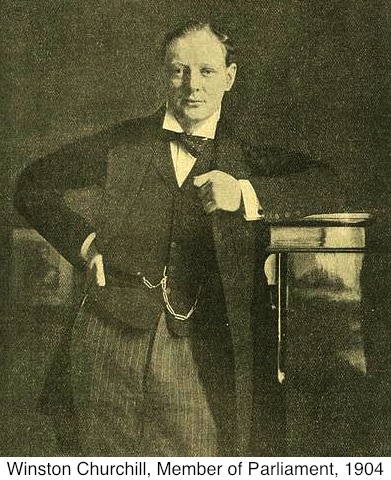 J. Pierpont Morgan formed the U.S. Steel Corporation.
J. Pierpont Morgan formed the U.S. Steel Corporation.- In Paris, Pablo Picasso, at just 19 years of age, had his first art exhibition.
- Gustave Whitehead, in front of witnesses in Connecticut, made the first powered flight in a heavier-than-air plane. This was two years before the Wright Brothers flew in Kitty Hawk, North Carolina. So why do we know about the Wright Brothers and not about Whitehead? Publicity and marketing. For example, In 1948, the executor for the Wright brothers made an agreement with the Smithsonian Institution that the Smithsonian could display the original Wright brothers aircraft as long as they never said that anyone made a controlled, powered, heavier-than-air flight before the Wrights.
 The Cadillac Motor Company was founded.
The Cadillac Motor Company was founded.- Queen Victoria of Britain died after ruling for nearly 64 years.
- Control of the Panama Canal was ceded by the UK to the U.S. allowing the U.S. to build and complete the canal, revolutionizing transportation.
- In China, the Boxer Rebellion officially ended.
- Constantin Stanislavsky formulated the famous “method acting” technique that revolutionized theater.
- The first Nobel Prizes were awarded
- Although the value of fingerprints was known half a century earlier, it was only in 1901 when Scotland Yard created a fingerprint archive.
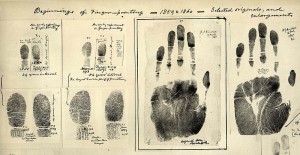 Edward Elgar’s “Pomp and Circumstance March” had its premier in Liverpool, England. It’s familiar theme became used in school graduations.
Edward Elgar’s “Pomp and Circumstance March” had its premier in Liverpool, England. It’s familiar theme became used in school graduations.- Marconi sent & received the first transatlantic radio signal, from Cornwall to Newfoundland. Although based on the work of Nicola Tesla, Marconi got the credit for inventing radio. It took decades for Marconi’s patent to be overturned by the U.S. Supreme Court and given to Tesla. That didn’t occur until 1943, a few months after Tesla’s death.
 The future emperor of Japan, Hirohito, was born.
The future emperor of Japan, Hirohito, was born.- Actress Marlene Dietrich was born.
- Violinist Jascha Heifetz was born.
- Italian composer Giuseppe Verdi, famed for the operas Rigoletto, La Traviata, and Aida, died.
- French Post-Impressionist painter Henri de Toulouse-Lautrec, famous for his paintings of performers and dancers toward the end of the 19th century, died.
- The vacuum cleaner was patented by British inventor Hubert Cecil Booth.
- Alzheimer’s disease is described for the first time by German psychiatrist Alois Alzheimer.
U.S. EVENTS IN 1901
In the Americas, the U.S. was about to come out of isolationism and become a true world power as a result of participation in the upcoming first World War. Industrialization that would power the American economy was booming, and there were also numerous amazing events that took place:
- Baseball’s American League played its first game.
- Oil was discovered in Texas. This first great Texas “gusher” was drilled at Spindletop in Beaumont.
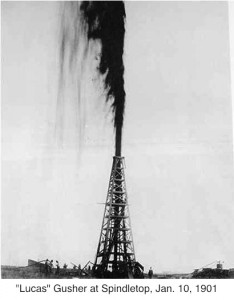 New York became the first state requiring auto license plates. The fee for the plates: $1.00.
New York became the first state requiring auto license plates. The fee for the plates: $1.00.- The “Wild West” was not gone. In Montana, Butch Cassidy and the Sundance Kid robbed a train of $40,000 (worth close to one million dollars in 2011).
- The Great Fire of 1901 decimated Jacksonville, Florida. It’s destruction and scale was similar to the Great Chicago Fire of 1871. In a mere eight hours it burned 146 city blocks, more than 2,350 buildings, and left 10,000 people homeless.
- Construction began on the New York Stock Exchange.
- William S. Harley drew up plans for a prototype motorcycle. Two years later, with Arthur Davidson, he would form one of the most iconic motorcycle companies in the world, Harley-Davidson.
- Theodore Roosevelt, then Vice President of the U.S., made his famous quote, “Speak softly and carry a big stick” at the Minnesota State fair.
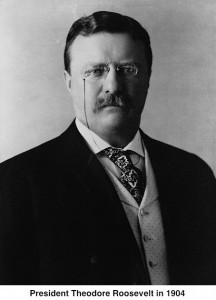 Spending by the Federal Government reached $530 million dollars. (just under $11.5 billion in current dollars).
Spending by the Federal Government reached $530 million dollars. (just under $11.5 billion in current dollars).- Frank Buckles was born. Later, he lied about his age to get into the army and fight in WWI. In 2011 he died, the longest surviving U.S. veteran of that war.
- The Pan American Exposition began in Buffalo, New York. President William McKinley visited and was shot by Leon Czolgosz. McKinley died 8 days later. Czolgosz was tried, convicted, and executed by electrocution 6 weeks later.
- Roy Wilkens, future director of the NAACP was born.
- Theodore Roosevelt renames the President’s Executive Mansion, calling it, for the first time, “The White House.”
- President Theodore Roosevelt invited famed African-American leader Booker T. Washington to the White House. Washington became the first African-American to dine there as a guest. Racial tension increased as a result, especially in the U.S. South.
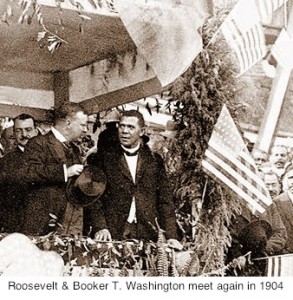 King Gillette patented and began selling the first disposable razor and blades.
King Gillette patented and began selling the first disposable razor and blades.- Pollster George Gallup was born.
- Experimental composer and instrument inventor Harry Partch was born.
- Racism continued strongly in the U.S. with over 100 African-Americans known to have been lynched.
- Future U.S. Senator John C. Stennis was born.
- Linus Pauling, one of the four people to have ever received Nobel Prizes in more than one category (he received them in chemistry and peace), considered to be one of history’s most important scientists and controversial as a supporter of the use of high-dose vitamin C, was born.
THE OCCULT IN 1901
The occult world was changing, too. Following the death of Madame Blavatsky in 1891, The Theosophical Society she had co-founded split into several groups, losing much of its dynamism. L. W. de Laurence was busy pirating books by other authors, mixing up different books by giving them inappropriate titles, and adding his own ideas to the books. His contributions built interest but had no real structure. Although people near big cities could obtain his pirated editions, they were often confusing. A. E. Waite, had begun to write in his difficult and archaic style, but his major occult works, such as his Tarot deck (with Pamela Colman Smith) and his books on the subject were still a decade away. The Hermetic Order of the Golden Dawn had experienced a major schism just a few years earlier, and in 1901, poet William Butler Yeats, one of the Order’s most famous members, wrote a pamphlet about the very nature of the inner order of the group entitled Is the Order of the R.R. & A. C. to Remain a Magical Order? The original G.D. temple in London, known as Isis-Urania, claimed independence, but had more disputes, leading to Yeats’ resignation from the Order. Aleister Crowley was primarily doing personal work. It would be three years before he received The Book of the Law and eight years before he began publishing The Equinox.
While the Golden Dawn was a secret order, a more public group was reaching its zenith. Fifty years earlier, Two young girls in Hydesville, New York, claimed to have made contact with the spirit of a deceased peddler. While people had claimed such communication since the dawn of time, what made the Fox sisters unique is that they, and people around them, could hear rapping noises that seemed to be responses from the dead.
It was this ability to provide seemingly tangible evidence of life after death that caused a sensation. Soon, people all over the world, but especially in the U.S. and U.K. were trying to contact spirits. In this year the manufacturing of Ouija boards, patented ten years earlier, was taken over by William Fuld and rapidly grew in popularity. Allan Kardec, a teacher in France who had earlier tried to present a workable theology for this spiritual movement, had coined the name by which this growing community would be known: Spiritism.
Although ostensibly Christian, there was no Spiritualist papacy or central authority. Just about anyone could call himself or herself a medium and a spiritualist. Many wrote books that contradicted each other. The major focus of Spiritism (or Spiritualism) was the séance where people tilted tables, received apports, heard voices, and believed they communicated directly with the deceased. Because parts of the séance would occur in a dark room, there was opportunity for fraud—too much opportunity.
Meanwhile, another group developed at this time taking the name “New Thought.” Part of this movement evolved from Spiritism, but another major trend (beside being heavily Christian in focus), was the idea of the power of the mind. From New Thought came writers such as William Walker Atkinson, Napoleon Hill, and Bruce MacLelland who popularized the idea of the Law of Attraction, writing, “You are what you think, not what you think you are.”
There were different concepts and ideas, each with their own leaders. Books which contradicted each other (or plagiarized each other) were available if you lived in a major city. In 1901 only 13% of the U.S. people lived in urban areas. Today it’s about 80%.
For urban dwellers, spiritual information was often confused, contradictory, and written in ornate and challenging Victorian style. For the majority living outside of urban areas, information was often difficult to obtain. You might wait weeks for something to arrive in the mail, and that material might be one person’s fantastic fantasies. But in 1901, everything was about to change.
Llewellyn George—who had been born in Swansea, Wales, was raised in Chicago, Illinois, and had recently moved to Portland, Oregon—had developed a love for astrology. In 1901, at the age of just 25, he started the Portland School of Astrology. Realizing that there was no good publisher of astrological literature, Mr. George in that same, fateful year, founded a company that focused on printing and distributing good modern information on astrology. Thus was born the Llewellyn Publishing Company.
In my next post I’ll be covering the development of the company
between its inception in 1901 and its purchase by Carl Llewellyn Weschcke in 1961.



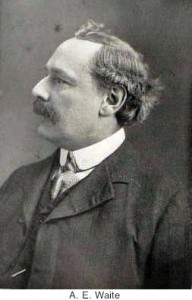
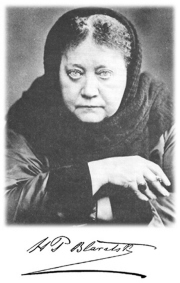
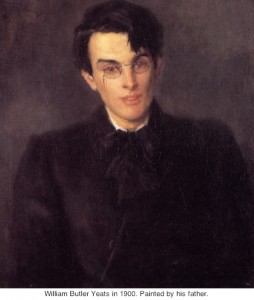
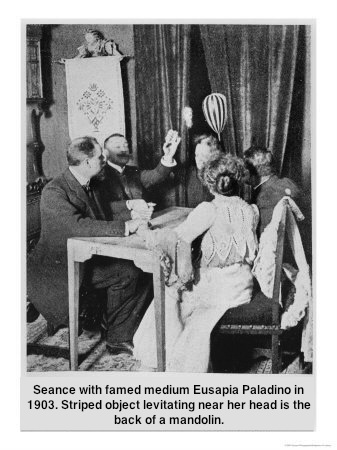
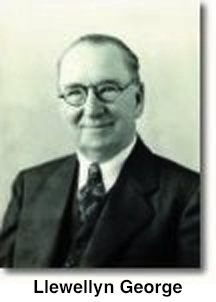








I tip my hat to Mr. Llewellyn in reverence.
Wow, so many years ago! Who new Llewellyn was so old? Looking really good for your age, then!
Thanks for an excellent outline of driving spiritual forces at work in 1901. Too many Christians seem to believe the world of legitimate psychic insights ended in 34AD–plus whatever Paul & Revelations had to say.
Remember in USA, even into the 1990’s, the basic vital spiritual practice of meditation was seen by “typical Christians” in the same light as Ouija boards & Hollywood supernatural horror flicks.
But why do many fundamentalists lump the rest of the world into “New Age”–even when talking about Buddha, Krishna and indigenous religions much older than Christianity? Why do they try to cobble a single “New Age agenda” picture when no such complete vision exists?
Partly because fear of what’s different makes peoples’ minds glaze over. Partly because it’s easier for “powerful leaders” to guide & control their flocks in opposition to dangers simple to picture. Partly because they want psychic, clairvoyant & unusual spiritual powers to “appear” only when they think Jesus wants those gifts of the Spirit to appear–and only to appear for those faithful, so their group can avoid dark forces & contrary thinking.
Fair enough–to each their own concepts…But the world’s spiritual evolution isn’t waiting for ANYBODY to give it permission.
I think we’ll “get zapped” with greater heart awareness at an appointed time–meaning when our dysfunctional human family is ready enough. Upward ascent will be much smoother for whoever gives themselves permission to recognize & work with their inner qualities BEFORE that tipping point!
I appreciate your Ideas Precede Actions principle & look forward to reading about how Llewellyn’s founding expresses that principle.
[…] 110 Years of Llewellyn: Part 1 […]
[…] 110 Years of Llewellyn: Part 1 […]
[…] 110 Years of Llewellyn: Part 1 […]
I remember buying my first years of astrology magazines and I loved saying the name Llewellyn. I didn’t know if I was pronouncing it write but it sounded to mystical to me. I would look at it after having read the whole magazine that I begged my mom to buy for me.
Congratulations to this Company on all the years it has lived.
P.S.
I still look at the name and repeat it to myself aloud.
[…] holistic and metaphysical publishing and thought. (You can read a history of Llewellyn in 3 parts: Part One, Part Two, and Part […]
Dear Sir,
Can someone please tell me where the evidence is for Llewellyn Publications having been founded in 1901? As an astrological historian, I like to see historical claims supported by historical evidence. For this one, I have yet to find any.
I have, however, found substantial contrary evidence in Llewellyn George’s own early publications that indicates the following to be a much more accurate rendition of the early history of Llewellyn Publications and its forerunners:
1) Until around 1912, neither Llewellyn Publications nor the Llewellyn College of Astrology appears to have existed. None of Llewellyn George’s books that I have seen prior to this date (I have two from 1911 itself) makes any mention of either of them, and none of them was published by either of them. A reasonable conclusion is therefore that neither of them had yet been founded in 1911.
2) Prior to the inception of Llewellyn Publications around 1912, all Llewellyn George’s books were published instead by the Portland School of Astrology, sometimes known in later issues as the P. S. A. Bulletina Publishing Company.
3) The director of the Portland School of Astrology is specified on the 1907 first edition of Llewellyn George’s ‘New, Improved Perpetual Planetary Hour Book’ as being not Llewellyn George but I. Hulery Fletcher. Llewellyn George is listed as an ‘astrologian’ working for the school. This strongly suggests that the organisation was founded, owned and directed not by Llewellyn George but by Fletcher, but that, either from the outset or from a relatively early stage, George worked for him and rose to prominence.
4) The 1911 Planetary Daily Guide for All also names Fletcher as the manager of the P. S. A. Bulletina Publishing Company, as it had by then come to be known, while George himself is listed not merely as an astrologian but as the principal of the school by this stage. Throughout this edition, the two men are presented in effect as a working team albeit each with his own responsibilities.
5) The Portland School of Astrology itself cannot have been founded before around 1903 unless the information given in the 1911 Planetary Daily Guide for All is itself inaccurate. This edition of the Planetary Daily Guide for All carries an advertisement for the school undersigned by Fletcher first and George secondly, and proudly states ‘Established Eight Years’.
In the light of the above evidence, would it not be appropriate to suggest that the centenary of Llewellyn Publications should be celebrated in or soon after 2012, rather than 2001?
Yours sincerely,
Philip Graves
The Portland School of Astrology, founded by Llewellyn George, was the educational arm (i.e., the school) associated with the publishing company. To give credence to the school, books were often published by the school. Similarly, Cohn-Brandt-Cohn Film Sales was founded in 1919, and in 1924 adopted the name Columbia Pictures. The company dates itself to 1919.
To anyone who may know,
Where was the physical location of the school?
Thank you for your time,
Al